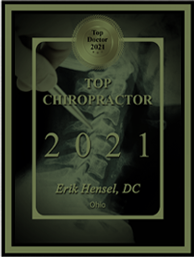Fascia is a fascinating, and underappreciated body system. It is similar to your nervous and vascular systems in that it creates an intricate web throughout your body and is one of many elements whose health influences the health of the whole body. Fascia is communicative, adaptable, and integral to overall health.
Fascia Involvement Within The Body
In nearly all cases of physical complaint, fascia has some involvement. Chronic issues, recurring injuries, shifting pains, and compounding concerns almost always have a previously unaddressed fascial element. That’s not to say you haven’t done some fascial work, either individually or with a professional. It is to say, however, that you haven’t done the right fascial work. This generally indicates that your focus has been too narrow.
Fascia plays an important role in the support and function of our bodies since it surrounds and attaches to all structures. It is a type of connective tissue that forms the framework of your body.
It connects skin to muscle, muscle to muscle, muscle to organ, can become a tendon or ligament, and fills bones in complex arrangements to give them their flexibility and tensile strength.
Depending on the speed at which it is called upon to engage, it can become nearly solid, elastic, or plastic in nature. It has been compared to
- cotton candy
- spider webs
- the veins of leaves
- the infrastructure of an orange
- a Chinese finger trap
All of which are fair depictions, depending on the location/layer, health, and hydration of the fascia.
FASCIA’S INTERCONNECTEDNESS
Fascia has been removed and discarded by anatomists to expose muscles, bones, organs, etc and considered irrelevant for hundreds of years. This is still true in most institutes of higher learning. Fortunately, over the last few decades, fascia has entered a period of rediscovery. It is being better studied and better understood, especially regarding its role in whole body communication and coordination.
In its normal, healthy state, the fascia is relaxed and wavy in configuration. It is well organized into patterns that can stretch and move without restriction. One fascial layer glides past another smoothly as do the muscles, vesicles, and nerves that pass between and through the layers of tissue. Fascia is constantly changing and adapting to serve your body’s needs.
Fairly enough, unresolving, shifting, or compounding complaints can manifest where fascial dysfunction is not primarily involved. This includes pains in various places, but can also include other symptoms like dizziness, bowel irregularity, difficulty in childbirth, etc.
For these cases, my clinical experience would direct me to look internally, considering the interconnectivity of other body structures, functions, and systems as they relate to the so-called problem area. This depth of interconnectivity is a topic for another day, but I think it’s important to at least plant the seed of how outside the box this concept can be and is for many.
Fascial Chain Dysfunction And Pain Points
For today’s purposes, we will focus on examples of the complaints most commonly and directly related to fascial chain dysfunction. Some of these include:
PENDULUM PAINS
You have heel pain sometimes. You have back pain sometimes. occasionally they will hurt or not hurt simultaneously, but typically, when the heel is irritated the back is fine and vice versa
SHIFTING PAINS
Your back has bothered you for years to some degree or another but has recently been better. Yay… except that now, within days to months of your back improvement, heel pain has appeared.
RECURRING PAIN
IT band syndrome, plantar fasciitis, patellar chondro-malasia, shin splints, golfers elbow, tennis elbow, certain headaches… These are all fascial range of motion insufficiencies, fascial movement dysfunctions, or typically the combo of both.
MYSTERY APPEARANCE PAIN
These are pains that have been there for as long as you can remember, that don’t have a specific origin or injury that you attribute to their onset. They’re basically overuse injuries that have resulted from old injuries. Often the old but underlying injury is no longer notable, and has not been “problematic” for years!
COMPOUNDING COMPLAINTS
You had foot pain, now you have knee pain, low back pain and energy issues… especially if “nothing has changed” or you hit 35,40,60, you pick the age, and “started falling apart”
“NORMAL”/CHRONIC/ “ALWAYS THERE” ISSUES
These are long standing and relatively constant complaints. For example, your back has bothered for years, or back feels better after an adjustment/massage/etc. but comes back again, especially if it is recurring more frequently or more intensely.
Any of these issues can indicate that you have a fascial issue. The challenge is determining where the issue is originating:
- from range of motion deficiency
- scar tissue
- poor movement patterning
- some combination of all of them
These shifts, swings, recurrences, etc. are a credit to your body’s amazing adaptability. Your body does nothing in vain and does all things with the intention of making it to tomorrow. There is, of course, more to making it to tomorrow than movement and fascial communication, but that level of interconnectivity will have to be left for another day as well.
Trauma And Facscia
Trauma in its broadest sense can include acute injury, repetitive injury, scaring, inflammation, stress, emotional distress and more. These can cause fascia to lose its pliability and become disorganized. Rigid, disorganized fascia hinders movement, increases likelihood for injury/reinjury, reduces glide and hinders communication throughout the body. This can translate to feelings of soreness, pain, restriction, unevenness from side to side, or tightness especially of chronic nature (ie: tight hamstrings).
As a result, trauma, both sudden and repetitive in nature creates cumulative effects on the body as other areas are recruited to help the injured area work better.
Common traumas include but are certainly not limited to
- ankle rolls
- falls
- sports injuries
- car accidents
- whiplash
- surgery
- poor posture
- walking/running
- other repetitive movements when done poorly over-time
When fascia gets restricted, it reduces the range of motion which in turn decreases joint Range Of Motion (ROM) and increases muscular imbalance. Some muscles turn off while others become overactive. Trigger points in muscles decreased ROM of muscles, and decreased joint ROM creates fascial dysfunction, again leading to more muscular imbalance, more movement pattern inefficiencies, and ultimately to pain, discomfort, or other symptoms elsewhere. When it comes to fascial dysfunction, the point where you feel the pain is frequently not the area of greatest distress/dysfunction. For example:
It is not uncommon for headaches/migraines and plantar fasciitis to be related.
Carpel tunnel numbness and tingling are commonly the results of neck, shoulder, chest, midback, or even lower back and hip dysfunction.
IT band syndrome and patellar chondromalacia can stem from dysfunction in the head, the feet, or anywhere in between, but is almost always a movement pattern issue that continues to recur because very few practioners look outside of the tunnel that views is the area of pain.
I could go on, but you get the idea. If your problem is chronic or continues to reoccur, you need to look at it with a broader lens.
A (Fascia) Chain Reaction
Fascia plays an integral role in our body’s adaptive process. How well one injury heals affects how efficiently other areas move, thus creating changes in our movement patterns and eventually causing muscular imbalances that make further, repetitive use type injury more likely.
In fact, our bodies are so great at adapting that we often don’t have any idea there is still a problem in the area of an old injury because we have figured out how to move around the pain, or in a slightly different way that doesn’t hurt, but still achieves our goal to move from one place to another or reach something above our head, etc.
SHORT TERM HEALING VS LONG TERM HEALTH
Our bodies are lazy.
Any time you have an injury your body will begin to heal it, but if it can figure out a different way to move and not have to exert so much energy to continue healing the tissue, then it will do so. Your body will sacrifice movement efficiency and the risk of degeneration down the road to preserve energy for right now because if you can’t make it to tomorrow, then 20 years from now doesn’t matter.
Fascial mobility or restriction affects our flexibility, stability, and adaptability. It is a determining factor in our ability to withstand stress and perform daily activities. Good fascial mobility can be the difference between having zero recourse after rolling your ankle or it blowing up like a balloon!
Frequently, before an injury can heal all the way, the body figures out a different way to move. Healing and remodeling tissue takes time and energy which leaves you vulnerable and your body doesn’t love that. In the primitive sense – being vulnerable means you might not be able to escape from a tiger or find food, etc. Changing your movement pattern though less efficiently, in the long run, is the path of least resistance.
The point is that all other things equal in regards to general health and the way you rolled your ankle, old injuries, even those regularly undetectable by you, are likely the result of your fascial restriction and predisposition for greater injury.
Movement pattern change is what leads to the mysterious onset of various aches, pains, and other symptoms. For examples, the pains that “just showed up,” are where you “hold your tension,” or are your “normal” are almost always due to the cumulative effect of injury + compensation + muscular imbalance leading to new injury, irritation, ache or pain.
Overall fascial health and movement pattern efficiency go hand in hand and should not be addressed separately of one another for most effective results in reducing pain, removing underlying contributors, and eliminating recurrence/chronic presence. However, fascial dysfunction and movement pattern dysfunction caused by old injuries or repetitive use is still not the whole story.
Fascia also wraps around organs. Fascial dysfunction in an organ can be contributing to physical pain or irritation in another area of your body. Conversely, dysfunction in a joint can create distress in an organ. For example:
Shoulder pains and stomach dysfunction are commonly related.
Adrenal dysfunction and IT band Syndrome or patellar chondromalacia are commonly related.
These are 2 very common examples and there can be more to this than just the fascial/movement connection, but for our purposes right now, the point is to note that physical and physiological dysfunction can be related and thus, should be considered, especially in the case of chronic or recurring concerns.
Since our purpose for this blog is to better understand fascia, we’ll leave this as a very general comment for today and dig more into these connections in other blogs and individual visits as each person is unique in the combination of historical events and contributing factors that need to be addressed.
For the purposes of explanation and organization, fascia is organized into fascial/myofascial chains, lines, and slings depending on who you read. In reality however, fascia seamlessly connects the entire body to one degree or another with greater or less thickness and strength throughout the body depending on the purpose of the connection and communication. Fascia wraps around the individual fibers of each muscle connecting the fibers or each muscle to one another, wraps around the full muscle, connects the muscles to muscles surrounding it and extending above and below, attaches muscle to skin and bone, and it wraps around organs, vessels etc. on the way through your mid-section. In short, fascia connects left to right, front to back, head to foot, and everywhere in between. It’s amazingly responsive and is a huge player in your ability to adapt to insult, injury, and other life events. This is both a blessing and a curse however because this level of adaptability can make it very difficult to figure out where and how to focus your energy for healing.
Example: Muscle needs to connect to bone, to create movement. To connect the muscles of the body to the bones, the body uses fascia. In this structure, you will have a muscle, a bone, and a tendon to transmit the force of the muscle. The muscle, tendon, and bone, contain fascia. The fascia pervades and encapsulates all of these structures, and links these structures to each other. Fascia then links this grouping to the next tendon, muscle, and bone in the line or chain.
Muscle needs to connect to bone, to create movement. To connect the muscles of the body to the bones, the body uses fascia. In this structure, you will have a muscle, a bone, and a tendon to transmit the force of the muscle. The muscle, tendon, and bone, contain fascia. The fascia pervades and encapsulates all of these structures, and links these structures to each other. Fascia then links this grouping to the next tendon, muscle, and bone in the line or chain.
These chains make movement possible.
These chains distribute the contractile force created by muscle and turn it into usable motion by moving the bones they connect to.
If any part of this chain is weak, restricted, or otherwise dysfunctional, the entire chain will reflect this in that some areas of the myofascial chain will overwork to make up for the areas that are underworking.
Consider it similar to a group project where 2 of the members are goofing off in the corner, 2 are pulling their weight, and another one or 2 are picking up what the slackers dropped the ball on in addition to their own work. As you can imagine, the areas that are doing their work plus others are eventually going to get tired. If the scenario is set up where the whole business or class benefits from the success of all of the groups, the members of the taxed group may reach out to other groups for help.
This happens in your body as well as one fascial chain reaches out to neighboring muscles that can help perform the same motion. In this way, you can get more done for a period of time, but the exhaustion and degeneration perpetuate into surrounding areas until you get to the point of the straw that broke the camel’s back… aka, the pain/dysfunction is recurring, chronic, increasing in intensity/frequency/consistency, and eventually leads to irreversible degeneration.
The good news is that even at the point of irreversible degeneration, if you identify the roots of the dysfunction and degeneration (in this case, the 2 slackers in the first group) and retrain the tissue (or whip those slackers into shape so they start pulling their weight), you can restore a great deal of function, reduce pain, prevent further degeneration, and improve quality of life! Full disclosure – it takes work to work through injuries and ailments in this way, but the reward is so worth it.
(For a deeper dive into specific chains, I recommend picking up Anatomy Trains by Thomas Meyer)
Tips To Improve And Maintain Fascial Health
SPEND 10MIN +/- ENGAGING IN ACTIVE STRETCH DAILY
Ideally moving through all ranges of motion to melt away any fascia that laid down while you were still overnight. Actively reach your stretch in opposite directions, rather than passively maintaining a position.
For example, say you are doing a seated forward fold, don’t just fold and hold, instead reach your heals in one direction and your SITS bones in the other creating an deep, static, but active stretch. You may even move in the stretch shifting your weight, pointing or flexing the feet, twisting your torso, turning your head, or working through other movements that feel “therapeutic”… or that “hurt so good.”
Work through each stretch for 1-3 minutes. You can hold it longer of course.
Stretching by itself may just stretch muscles if you are moving in a way that is “breaking the chain” for example, if you forward fold with the knees bend, you’ll stretch the calves and the hams, not the superficial back line. (Try it, see the difference. I’ll show you in person sometime.)
If you feel a deep burny-tingling sensation, that’s when you know you’re getting a good fascial stretch
ROLL OUT YOUR TIGHT SPOTS WHILE MOVING THROUGH RANGE OF MOTION
In a perfect world, you combine rolling sore areas of adhesions, scar tissue and dysfunctional bundles of muscle/fascia with movement. This does 2 things:
- It helps the injured, disorganized tissue reorganize in a more linear, pliable, healthy way.
- It helps retrain your movement pattern to a more efficient pattern, restoring “rest-ability” to over-active musculature, and reinvigorating inactive musculature.
This is not always the most comfortable way to work the tissue because adding movement should increase and decrease the tone/ tension as you move back and forth through the range of motion, but it more efficiently directs your body how to heal and how to move. As you gain range of motion you temporarily lose motor control. Retraining movement while increasing range of motion helps speed up the learning curve. Consider moving from a studio apartment to a 4 bedroom house… it takes a little while to figure out what to do with all the extra space before you feel settled. Same idea here.
An important note about self-induced soft tissue remodeling (aka: Rolling):
There is a fine line between therapy and torture.
An affected spot will be uncomfortable to roll out, however, if you feel like you have to tense up another area of your body because the discomfort under the ball is so intense, you need to ease off.
If you work yourself too hard, your body will recognize your efforts as injury rather than as a reminder to keep healing. (For more details see our Interconnectivity of Cumulative Injury” blog for a deeper dive into how this works)
VISIT THE SAUNA
Especially after the gym.
USE ICE AND HEAT
Ice and heat are especially helpful for soft tissue repair when coupled with one another and alternated
TAILOR YOUR WORKOUT AROUND YOUR FASCIAL GOALS
- For greater fascial glide and range of motion, slower-paced exercises like tai chi and yoga are your best bet for remodeling and improving plasticity of musculature.
- For creating better elasticity and spring in your fascia and musculature, tempo workouts such as HIIT, cardio, or sport specific training are great.
A note of caution: These types of exercise can be very repetitive in nature, and thus can cause a lot of degeneration if your movement patterns or dysfunctional, range of motion/musculature is imbalanced. This is why some people can run their whole lives and have no issues and other people end up needing a knee replaced. I recommend increasing these when movement patterns are correct or closely so.
Post injury or during recovery or retraining periods, the intensity and duration of such exercise should be decreased to allow remodeling and healing to continue at a manageable pace that is still receiving input specific to the movements you demand in your body.
REPLENISH!!
As athletes (both every day and elite athletes) we demand a lot of our bodies and it’s so important to give our body what it needs to replenish.
3 Key Elements To Replenish:
water, collogen, and digenstive enzymes. Keep you and your fascia hydrated .
1. WATER/ENHANCED WATER
Depending on age, hydration levels, hormone levels, body fat percentage, etc. our bodies consist of 45-80% water. Not having enough body water to utilize can seriously diminish healing of soft tissues as well as decrease performance and efficiency of other body functions. Water or hydration drinks (beware of sugar content of hydration drinks) are a great way to replenish water as well as other key electrolytes and minerals such as sodium, calcium, bicarbonate and magnesium.
2. SUPPLEMENT COLLAGEN
Collagen is the building block for soft tissues (muscles, tendons, ligaments, skin, fascia) in your body. When looking for a collagen supplement, make sure it consists mainly of type 1 and type 2 collagen as they are the most abundant and widely utilized in the body.
3. DIGESTIVE ENZYMES
When not being used to digest food, the body uses these enzymes to repair soft tissues (muscles, tendons, ligaments, fascia)
***Soft tissue repair packs like acute phase from Metagenics or soft tissue repair from orthomolecular combine the above (minus water) into easy to use packs. These are great for reducing exercise recovery time (1pack daily) or for facilitating quicker, more complete healing in the event of an injury (3 packs daily for 3 days) and always taken away from meals (at least 2 hours after and ideally an hour plus before)















